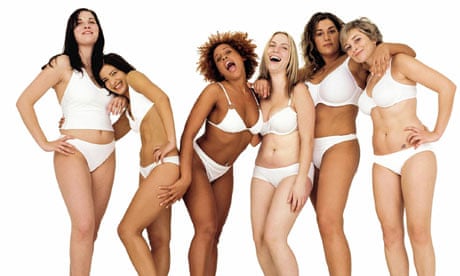The advertising world's perennial reliance on young, white and extremely thin models has long faced criticism from feminists and health campaigners. Now, new research at a leading UK business school suggests it might be doing something else: harming companies' balance sheets.
In what is believed to be the first such global survey of female consumers' attitudes, the research says women respond more favourably to a brand if the models it uses somehow mirror their own identities.
Advertisers cannot, however, simply enlist a few fuller-figured models, says Ben Barry, who is carrying out the research at Cambridge University's Judge business school: "In general, people have a more favourable reaction to brands that show models who represent people's age, size and background.
"It's not necessarily enough to show one component which is similar - people really wanted to see someone who represents them in all three factors."
Such an approach has been used by a handful of brands in recent years, notably the Dove skincare range, which made a deliberate virtue of using older and larger models in its award-winning Campaign for Real Beauty.
But elsewhere, particularly in the fashion and luxury goods industries, the traditional reliance on so-called aspirational advertising has limited change, despite high-profile campaigns against perceived racism and the encouragement of unhealthy female physiques within modelling.
The study, which is still being completed, canvasses the opinions of 2,000 women in the UK, US, China, India, Canada, Brazil, Kenya and Jordan.
Barry commissioned advertising agencies to produce a number of realistic print campaigns for products, including consumer and luxury goods. Half were made using what the study termed "traditionally attractive models" - aged 16 to 24, white and around US size zero, the equivalent of a UK size four - while the remainder pictured "realistically attractive models" of a range of ages, races and shapes.
The findings were marked. Aside from women aged under 25, who were less likely to object to an abundance of young, white, ultra-slim models, and Chinese consumers, who actively preferred them, most of those surveyed felt positive towards the brands that used the more diverse models.
A small number of earlier studies, mainly carried out by psychologists, have suggested that the use of excessively slim models can create a bad impression with female consumers. But Barry's work goes further: as well as looking at the issue from a business and marketing viewpoint, it additionally considers race and age.
The latter is a particular factor for companies to take note of given the relatively high spending power of older women.
The study quotes the reaction of one 50-plus participant to a mocked-up ad for a luxury product using a very youthful model: "It's a slap in the face to show this young woman because she'd never have the money to shop there whereas I do."
Another key finding was that while women preferred to see attainable images of beauty, this did not mean they were against glamour.
"The women wanted models who looked like they were part of the fashion industry but also looked like them," Barry says.
"It made them feel that they, too, were included in the industry and were considered beautiful. It's not just about taking a plain mugshot of a real woman."
Barry, who previously set up an agency for non-traditional models in his native Canada, says businesses needed to take note: "It's clear that in order to unleash new economic potential you need to represent your consumer physically.
"If you're a big fashion retailer and you're going to hire 10 models, you should make sure that each one of them represents a different aspect of your consumers."
While alluring for those who believe the promotion of unrealistic body images is inherently wrong, advertising experts warn that such studies are treated with extreme caution in the commercial world.
"This kind of research may have some interesting insights, but it's insights into the way consumers talk and think about the adverts when you prompt them," said Paddy Barwise, professor of marketing at the London Business School.
"There is a gap between what they say, particularly in the presence of other women, and what they would do actually at the point of sale, and that's a big gap, not a small gap."
But he added: "I think that we will see a trend away from very, very skinny models, because there is a social trend against it."
Closed door
While "real" models have made their way into campaigns for a range of products in recent years, when it comes to the luxury sector the door remains shut. A flick through the advertisements in the latest UK issue of Vogue brings no sign of anyone who would have to even breathe in to fit into a size eight dress, while there is one non-white face, actor Halle Berry
A recent craze has been the return of the supermodels prominent in the 1980s, such as Linda Evangelista and Claudia Schiffer, but even in their late 30s and 40s there is not a wrinkle or grey hair. Most of the fuss about excessive skinniness is now absorbed by the haute couture fashion shows; the last equivalent furore in advertising was over the Kate Moss "heroin chic" campaign for Calvin Klein 15 years ago.
More recently, the cosmetics giant L'Oréal was accused of lightening the skin tone of the singer Beyoncé Knowles for a press advert. Nonetheless, black faces - Naomi Campbell apart - remain extremely rare and size 14s unknown. Such luxury brands tend to be "very conventional in the way they communicate", said Neil Dawson, a leading advertising executive who heads the judging panel for the industry's IPA Effectiveness Awards. "This has meant that their campaigns have historically become a bit samey."

Comments (…)
Sign in or create your Guardian account to join the discussion